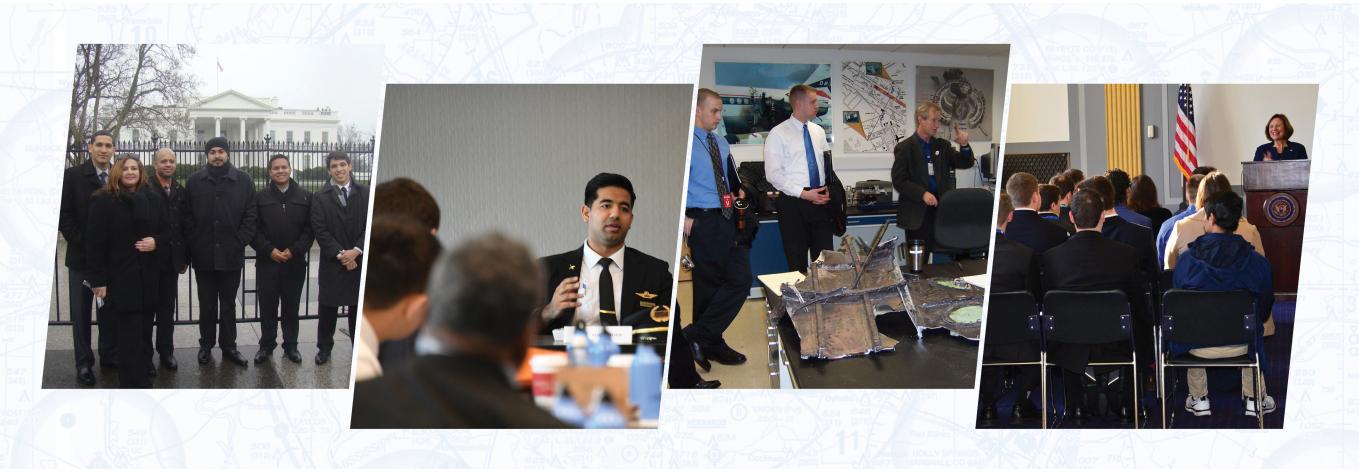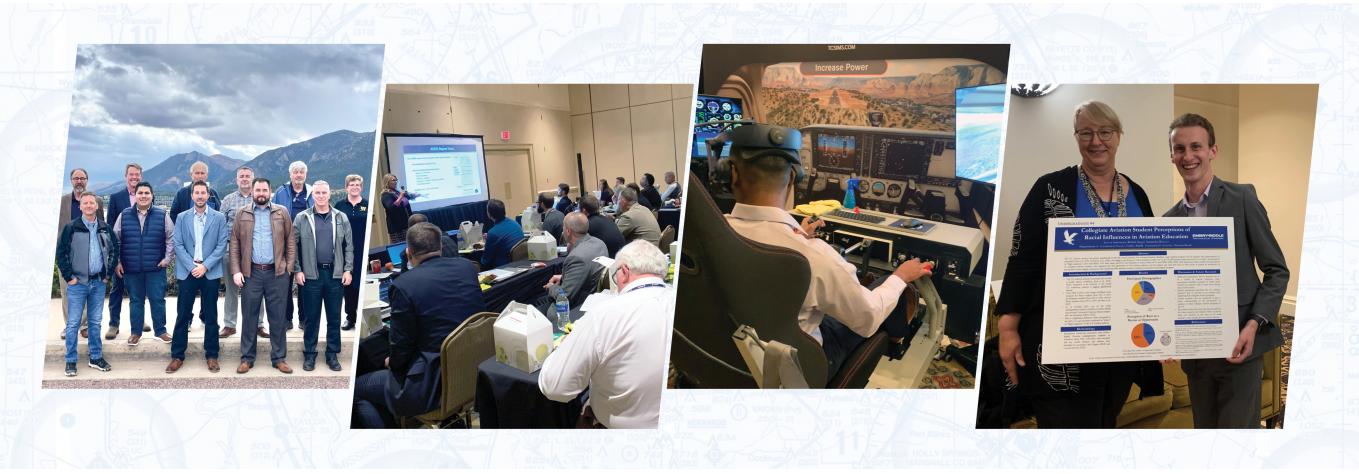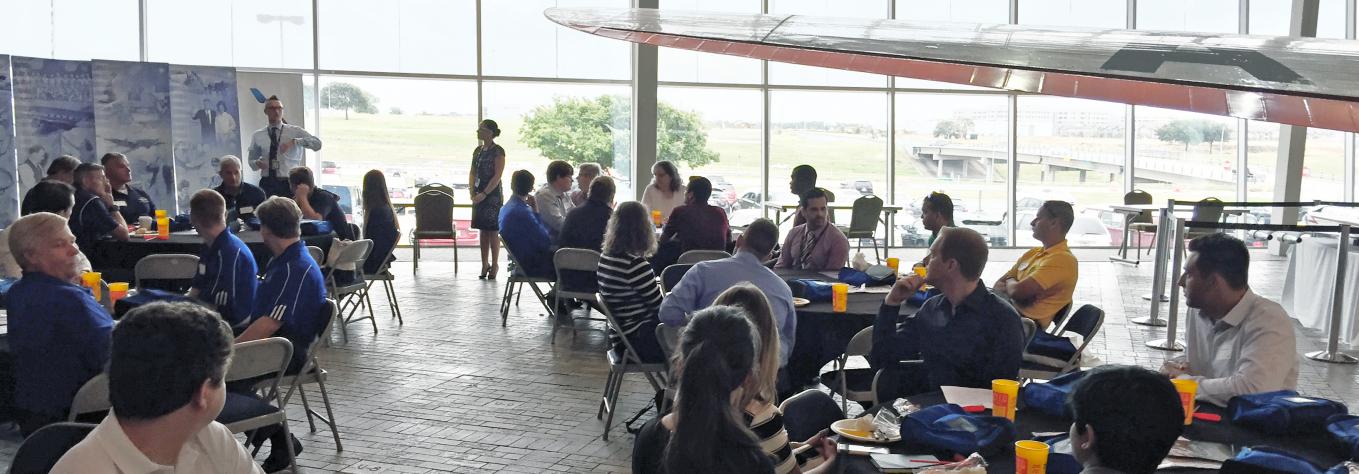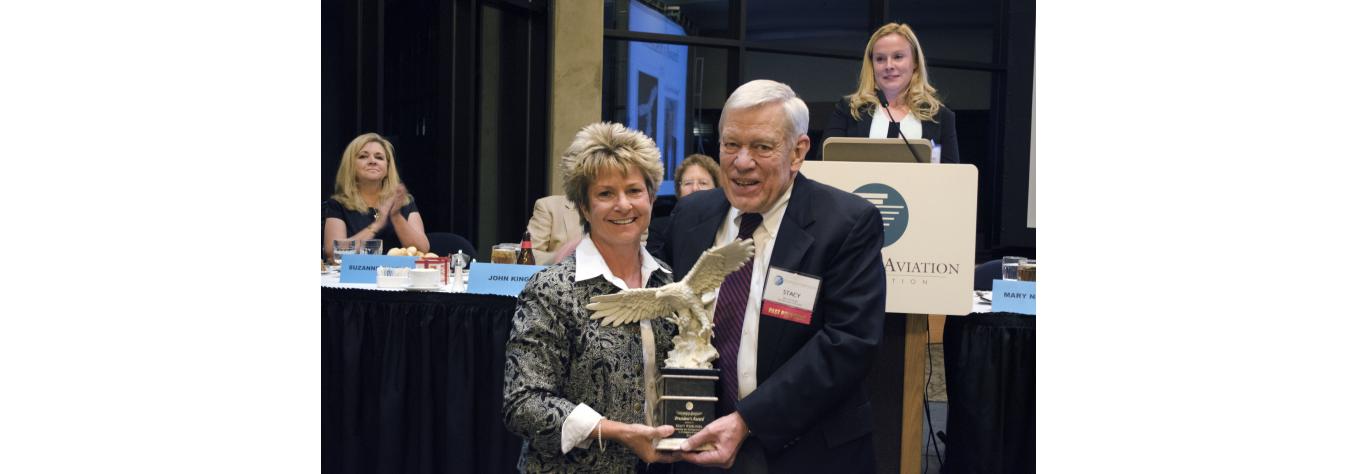News
UAA Member News
UAA Responds to FAA Policy Change on Approved Training Devices
On January 2, 2014, the Federal Register included the FAA’s “Notice of Policy Change for the Use of FAA Approved Training Devices.” The notification provided “information and guidance concerning the use of FAA approved ground trainers, Personal Computer Aviation Training Device’s (PCTD), Flight Training Devices (FTD) level 103, and Aviation Training Devices.” The UAA Simulation Committee formulated a response to the Notice, which was subsequently approved by the Board of Trustees. The comments expressed concern that the policy change would be detrimental to the flight training industry within the U.S. for two primary reasons: a loss of safety within the aviation community and the addition of further financial burdens on flight training providers and flight students. While the change was brought about in order to bring current FAA policy in line with the regulations that have been accepted, UAA suggests that a full rulemaking process needs to be undertaken to determine how much flight training should be permissible in an aviation training device (ATD).
FAA Policy Change on Approved Training Devices
(Adobe PDF File)
2010 Pilot Source Study
In February 20, 2010, a consortium of educators, regional airlines, and interested parties met to discuss a response to the Advance Notice of Proposed Rulemaking (ANPRM), entered into the Federal Register on February 8. The group agreed on the protocol for addressing the following “research question”: What were the characteristics of pilots who were hired by the U.S. regional airlines between 2005 and 2009, and how did these characteristics relate to their success in regional airline training? They also addressed ANPRM QUESTION 2A: Are aviation/pilot graduates from accredited aviation university degree programs likely to have a more solid academic knowledge base than other pilots hired for air carrier operations? Why or why not? The links below provide the Results and Summary of this effort.
Member News
On January 2, the Federal Register included the FAA’s “Notice of Policy Change for the Use of FAA Approved Training Devices.” The notification provided “information and guidance concerning the use of FAA approved ground trainers, Personal Computer Aviation Training Device’s (PCTD), Flight Training Devices (FTD) level 103, and Aviation Training Devices.” The UAA Simulation Committee form-ulated a response to the Notice, which was subsequently approved by the Board of Trustees. The comments expressed concern that the policy change would be detrimental to the flight training industry within the U.S. for two primary reasons: a loss of safety within the aviation community and the addition of further financial burdens on flight training providers and flight students. While the change was brought about in order to bring current FAA policy in line with the regulations that have been accepted, UAA suggests that a full rulemaking process needs to be undertaken to determine how much flight training should be permissible in an aviation training device (ATD).
Download the document from the UAA News Page.
2010 Pilot Source Study
In February 20, 2010, a consortium of educators, regional airlines, and interested parties met to discuss a response to the Advance Notice of Proposed Rulemaking (ANPRM), entered into the Federal Register on February 8. The group agreed on the protocol for addressing the following “research question”: What were the characteristics of pilots who were hired by the U.S. regional airlines between 2005 and 2009, and how did these characteristics relate to their success in regional airline training? They also addressed ANPRM QUESTION 2A: Are aviation/pilot graduates from accredited aviation university degree programs likely to have a more solid academic knowledge base than other pilots hired for air carrier operations? Why or why not? The links below provide the Results and Summary of this effort.
Results
Summary
Slide Summary
Report of Joint ABBI and UAA Meeting with FAA Administrator
On April 6, Executive Directors Gary Kiteley and Carolyn Williamson, and Presidents Tom Carney and David NewMyer met with Administrator Randy Babbitt and several members of his senior management team at FAA Headquarters, to brief them on the capabilities and impact of our combined Collegiate Aviation community, and to discuss a number of issues of great importance to all of us.
Report (pdf)
H.R.3371, S.1744 AND THE FAA ANPRM
FAA ANPRM – New Pilot Certification Requirements for Air Carrier Operations
UAA responsed to the Federal Aviation Administration’s Advanced Notice of Proposed Rulemaking (ANPRM) on “New Pilot Certification Requirements for Air Carrier Operations.” Click on the title below to access this response.
UAA Response to the FAA ANPRM (pdf)
ANPRM Document (pdf)
H.R.3371 - Airline Safety and Pilot Training Improvement Act of 2009
Responding to H.R.3371 (Updated 12/7/09)
Congressman Jerry Costello (D-IL), Chair of the House Aviation Subcommittee of the House Committee on Transportation and Infrastructure, introduced the “Airline Safety and Pilot Training Improvement Act of 2009” in the House of Representatives on July 29, 2009. The University Aviation Association responded to this legislation because of its importance to the collegiate aviation community. Details and links . . .
S.1744 - Enhancing Flight Crewmembers' Training
Legislative Contacts
What do you think of the Members Only page?
- UAA Responds to FAA Policy Change on Approved Training Devices
- 2010 Pilot Source Study Released
- Report on Joint AABI and UAA Meeting with FAA Adminstrator
- H.R.3371, S.1744 and the FAA ANPRM
UAA Responds to FAA Policy Change on Approved Training Devices
On January 2, 2014, the Federal Register included the FAA’s “Notice of Policy Change for the Use of FAA Approved Training Devices.” The notification provided “information and guidance concerning the use of FAA approved ground trainers, Personal Computer Aviation Training Device’s (PCTD), Flight Training Devices (FTD) level 103, and Aviation Training Devices.” The UAA Simulation Committee formulated a response to the Notice, which was subsequently approved by the Board of Trustees. The comments expressed concern that the policy change would be detrimental to the flight training industry within the U.S. for two primary reasons: a loss of safety within the aviation community and the addition of further financial burdens on flight training providers and flight students. While the change was brought about in order to bring current FAA policy in line with the regulations that have been accepted, UAA suggests that a full rulemaking process needs to be undertaken to determine how much flight training should be permissible in an aviation training device (ATD).
FAA Policy Change on Approved Training Devices
(Adobe PDF File)
2010 Pilot Source Study
In February 20, 2010, a consortium of educators, regional airlines, and interested parties met to discuss a response to the Advance Notice of Proposed Rulemaking (ANPRM), entered into the Federal Register on February 8. The group agreed on the protocol for addressing the following “research question”: What were the characteristics of pilots who were hired by the U.S. regional airlines between 2005 and 2009, and how did these characteristics relate to their success in regional airline training? They also addressed ANPRM QUESTION 2A: Are aviation/pilot graduates from accredited aviation university degree programs likely to have a more solid academic knowledge base than other pilots hired for air carrier operations? Why or why not? The links below provide the Results and Summary of this effort.
- Results
- Summary
- Slide Summary
Member News
- UAA Responds to FAA Policy Change on Approved Training Devices
- 2010 Pilot Source Study
- Report of Joint AABI and UAA Meeting with FAA Administrator
- H.R.3371, S.1744 AND THE FAA ANPRM
On January 2, the Federal Register included the FAA’s “Notice of Policy Change for the Use of FAA Approved Training Devices.” The notification provided “information and guidance concerning the use of FAA approved ground trainers, Personal Computer Aviation Training Device’s (PCTD), Flight Training Devices (FTD) level 103, and Aviation Training Devices.” The UAA Simulation Committee form-ulated a response to the Notice, which was subsequently approved by the Board of Trustees. The comments expressed concern that the policy change would be detrimental to the flight training industry within the U.S. for two primary reasons: a loss of safety within the aviation community and the addition of further financial burdens on flight training providers and flight students. While the change was brought about in order to bring current FAA policy in line with the regulations that have been accepted, UAA suggests that a full rulemaking process needs to be undertaken to determine how much flight training should be permissible in an aviation training device (ATD).
Download the document from the UAA News Page.
2010 Pilot Source Study
In February 20, 2010, a consortium of educators, regional airlines, and interested parties met to discuss a response to the Advance Notice of Proposed Rulemaking (ANPRM), entered into the Federal Register on February 8. The group agreed on the protocol for addressing the following “research question”: What were the characteristics of pilots who were hired by the U.S. regional airlines between 2005 and 2009, and how did these characteristics relate to their success in regional airline training? They also addressed ANPRM QUESTION 2A: Are aviation/pilot graduates from accredited aviation university degree programs likely to have a more solid academic knowledge base than other pilots hired for air carrier operations? Why or why not? The links below provide the Results and Summary of this effort.
Results
Summary
Slide Summary
Report of Joint ABBI and UAA Meeting with FAA Administrator
On April 6, Executive Directors Gary Kiteley and Carolyn Williamson, and Presidents Tom Carney and David NewMyer met with Administrator Randy Babbitt and several members of his senior management team at FAA Headquarters, to brief them on the capabilities and impact of our combined Collegiate Aviation community, and to discuss a number of issues of great importance to all of us.
Report (pdf)
H.R.3371, S.1744 AND THE FAA ANPRM
FAA ANPRM – New Pilot Certification Requirements for Air Carrier Operations
UAA responsed to the Federal Aviation Administration’s Advanced Notice of Proposed Rulemaking (ANPRM) on “New Pilot Certification Requirements for Air Carrier Operations.” Click on the title below to access this response.
UAA Response to the FAA ANPRM (pdf)
ANPRM Document (pdf)
H.R.3371 - Airline Safety and Pilot Training Improvement Act of 2009
Responding to H.R.3371 (Updated 12/7/09)
Congressman Jerry Costello (D-IL), Chair of the House Aviation Subcommittee of the House Committee on Transportation and Infrastructure, introduced the “Airline Safety and Pilot Training Improvement Act of 2009” in the House of Representatives on July 29, 2009. The University Aviation Association responded to this legislation because of its importance to the collegiate aviation community. Details and links . . .
S.1744 - Enhancing Flight Crewmembers' Training
Legislative Contacts
What do you think of the Members Only page?






